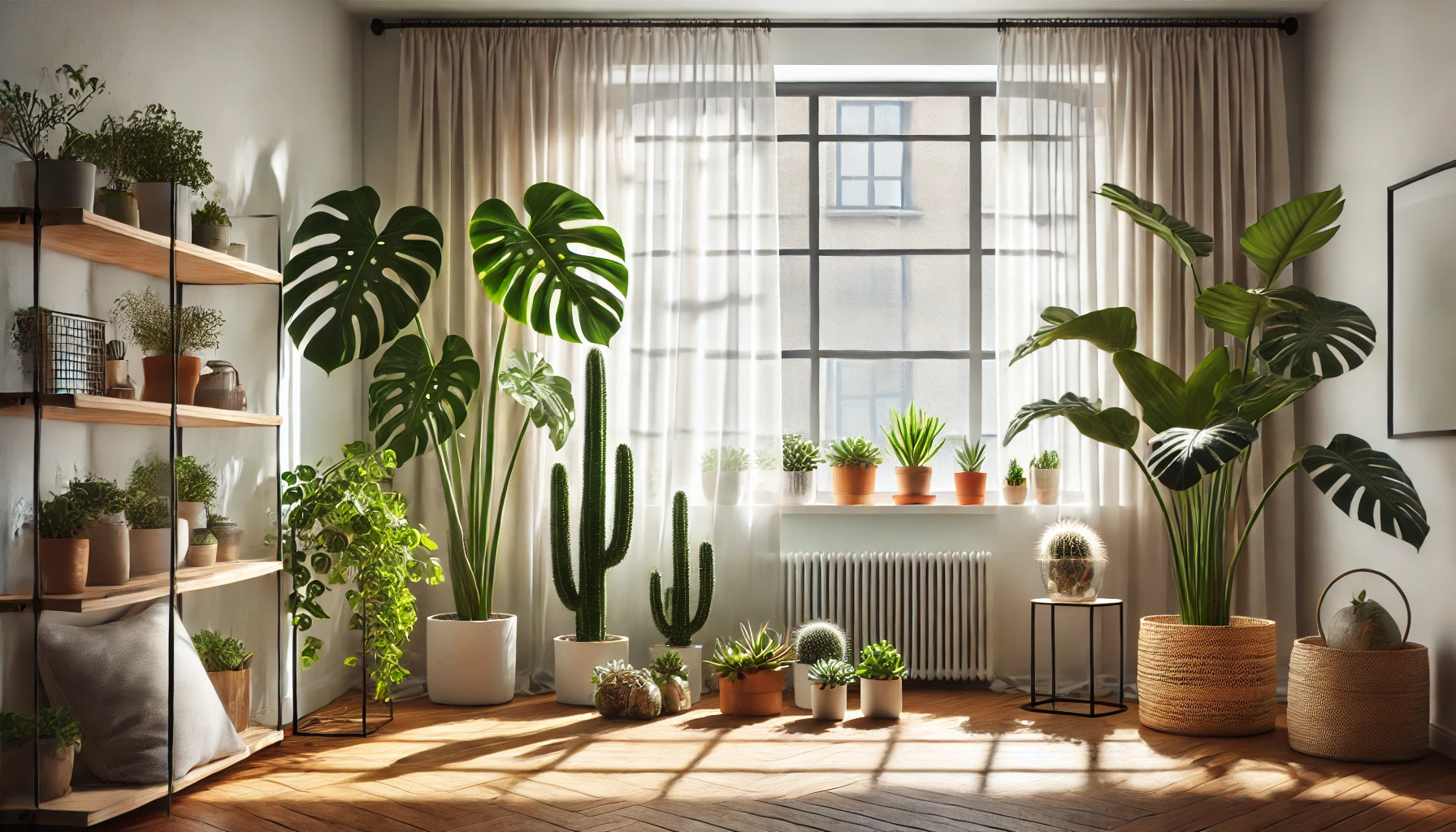Light is a vital element for plants, as it drives photosynthesis—the process by which plants convert light into energy. Without proper lighting, plants struggle to grow, produce flowers, or maintain their vibrant green appearance. This guide will help you understand the importance of light and how to find the ideal spot for your plants.
Why Light Is Essential for Plants
Light affects every aspect of a plant’s growth, from seedling to maturity. Here’s how it influences plants:
- Photosynthesis: Plants use light to convert carbon dioxide and water into oxygen and glucose, which fuels growth.
- Growth Patterns: Light dictates how plants grow, including the direction of growth and the development of leaves, stems, and flowers.
- Flowering and Fruiting: Proper light exposure triggers blooming and fruit production in many species.
Different plants have unique light requirements, so understanding these needs is key to their success.
Types of Light for Plants
Not all light is the same. Here are the main types of light and how they impact plants:
Direct Sunlight
This is the most intense type of light, ideal for plants like succulents, cacti, and citrus trees. These plants thrive when exposed to full, unobstructed sunlight for several hours daily.
Bright, Indirect Light
Bright, indirect light is diffused sunlight. It is suitable for a wide range of indoor plants, including Monstera, Pothos, and Peace Lily. You can achieve this by placing plants near a sheer-curtained window.
Low Light
Low-light conditions are found in shaded corners or rooms without direct sunlight. Plants like Snake Plant and ZZ Plant can adapt well to these environments but may grow more slowly.
Artificial Light
For spaces without natural light, artificial grow lights can provide a suitable alternative. Full-spectrum LED grow lights mimic natural sunlight and support healthy plant growth.
How to Identify a Plant’s Light Needs
Understanding your plant’s light requirements is crucial to finding the perfect spot. Here’s how to assess their needs:
- Check the Plant Tag or Label: Most plants come with care instructions that specify light preferences.
- Observe the Plant’s Natural Habitat: Tropical plants often prefer indirect light, while desert plants thrive in direct sunlight.
- Look for Visual Cues: Leggy growth, pale leaves, or lack of flowering can indicate insufficient light, while scorched or yellowed leaves may signal excessive light.
Finding the Perfect Spot for Your Plants
Assess the Lighting in Your Home
Observe how light moves through your space during the day. Consider factors like:
- Window Direction: South-facing windows typically provide the most light, while north-facing ones offer the least. East- and west-facing windows provide moderate light levels.
- Obstructions: Nearby buildings, trees, or curtains can reduce light intensity.
Match Plants to Their Ideal Locations
Place plants in spots that align with their light needs. For example:
- Bright Light Plants: Position near large, unobstructed windows or on sunny balconies.
- Indirect Light Plants: Keep near windows with filtered sunlight or in well-lit rooms without direct exposure.
- Low-Light Plants: Use shaded corners, but rotate the plant occasionally to ensure balanced growth.
Use Tools to Measure Light Intensity
Light meters can help determine the exact intensity of light in a given spot. Apps that measure light in lux or foot-candles can also provide insights.
Tips for Adjusting Light Conditions
- Move Plants Gradually: Avoid sudden changes in light exposure to prevent shock.
- Rotate Plants: Turn pots occasionally to ensure even light exposure and prevent leaning.
- Supplement with Grow Lights: If natural light is insufficient, install grow lights to support your plants.
Common Light-Related Problems and Solutions
Problem: Leggy Growth
Cause: Insufficient light.
Solution: Move the plant to a brighter spot or use grow lights.
Problem: Scorched Leaves
Cause: Excessive direct sunlight.
Solution: Relocate the plant to a spot with filtered or indirect light.
Problem: Lack of Flowering
Cause: Inadequate light exposure.
Solution: Ensure the plant gets the required amount of light daily.
Conclusion
Light is the foundation of healthy plant growth. By understanding the types of light and matching your plants to the right spots, you can create an environment where your greenery thrives. With observation and a little experimentation, you’ll master the art of positioning plants for optimal light exposure, ensuring they grow lush and beautiful.
